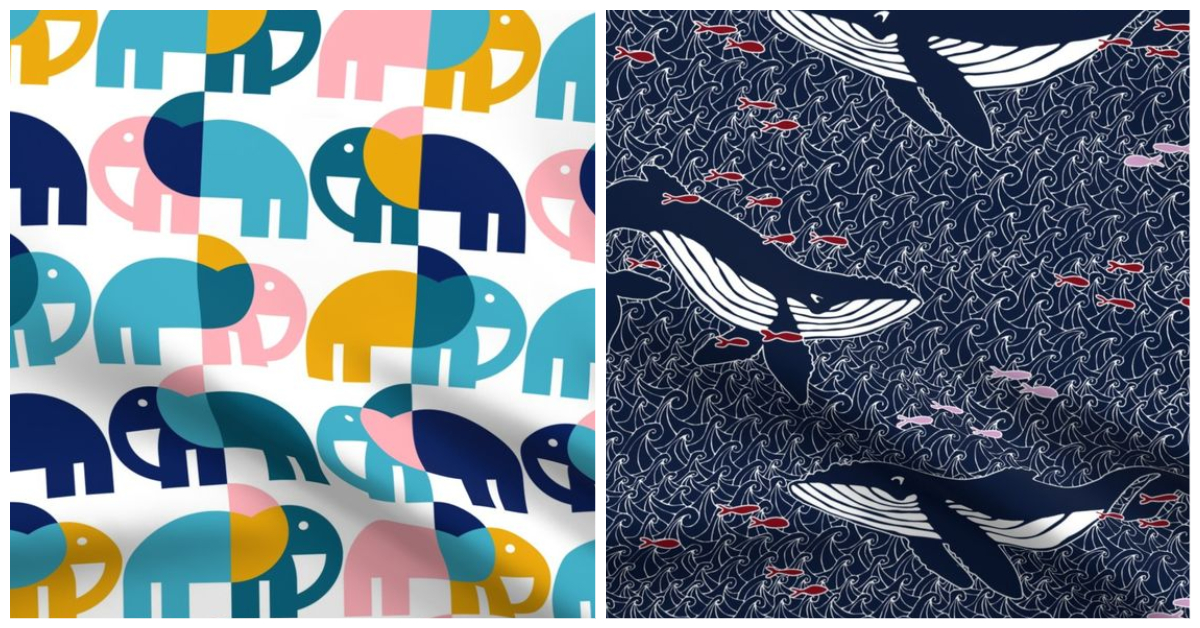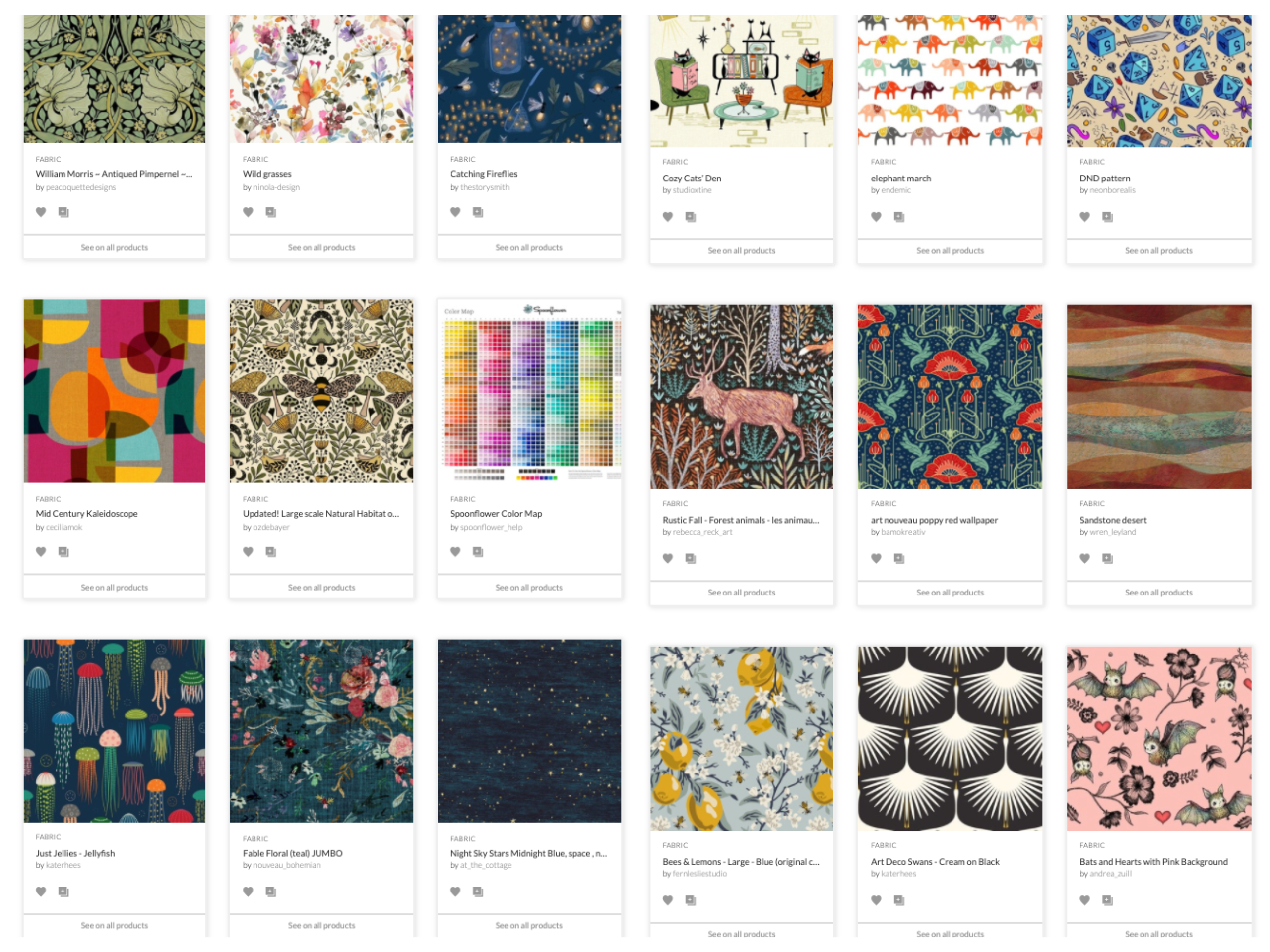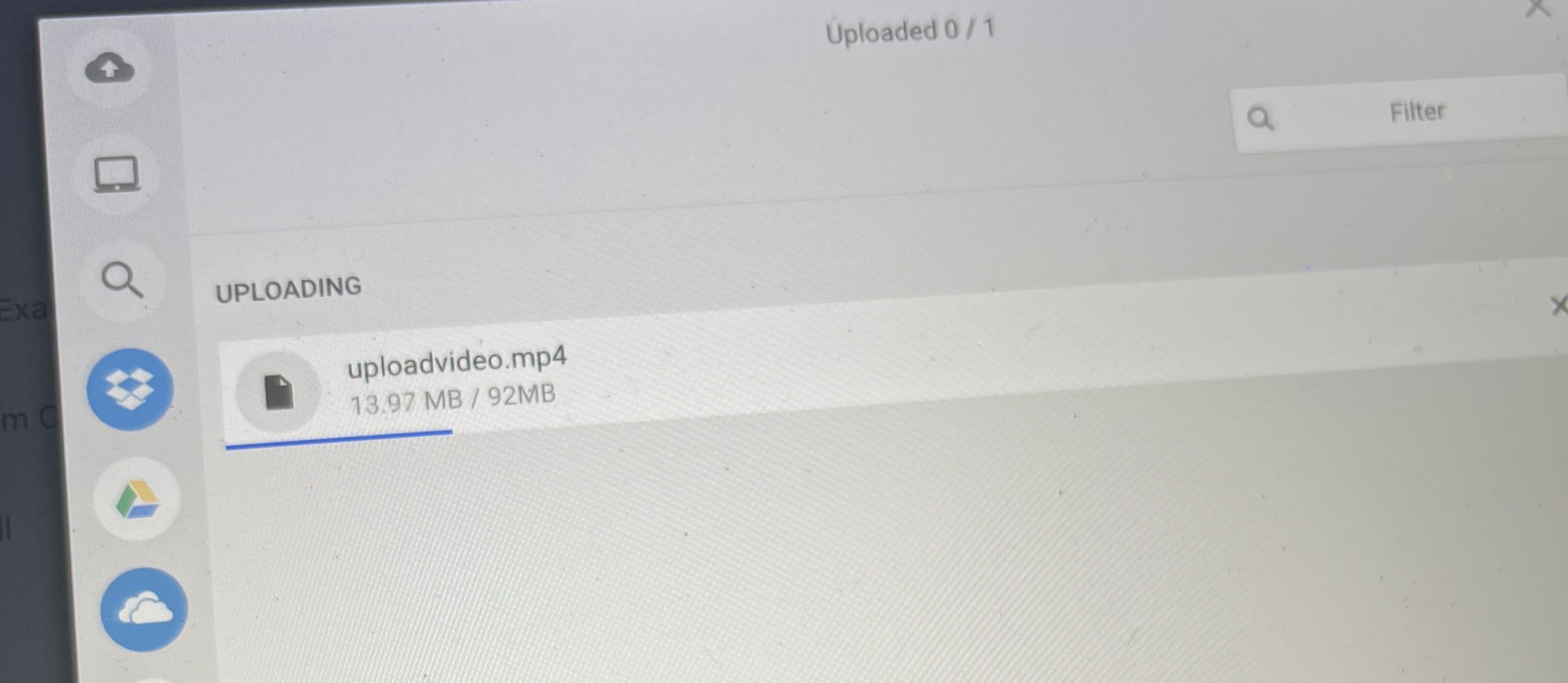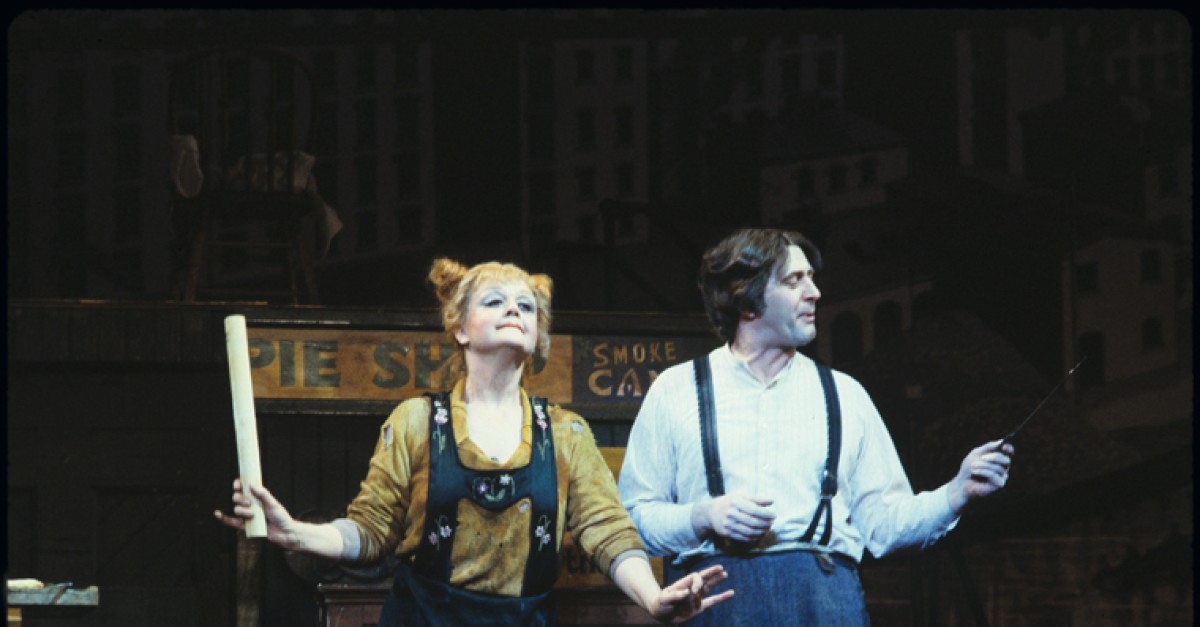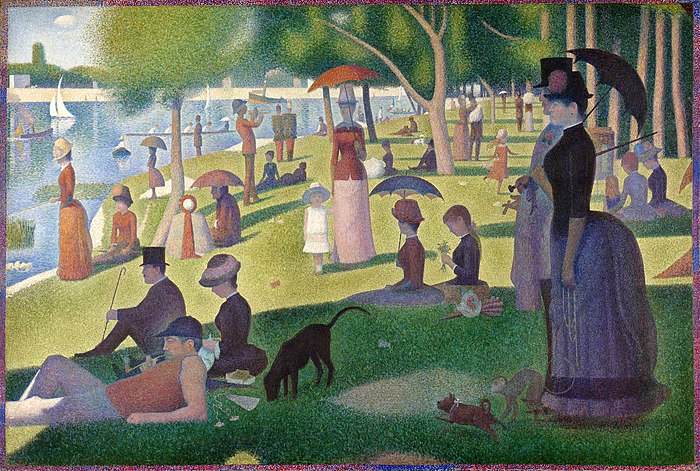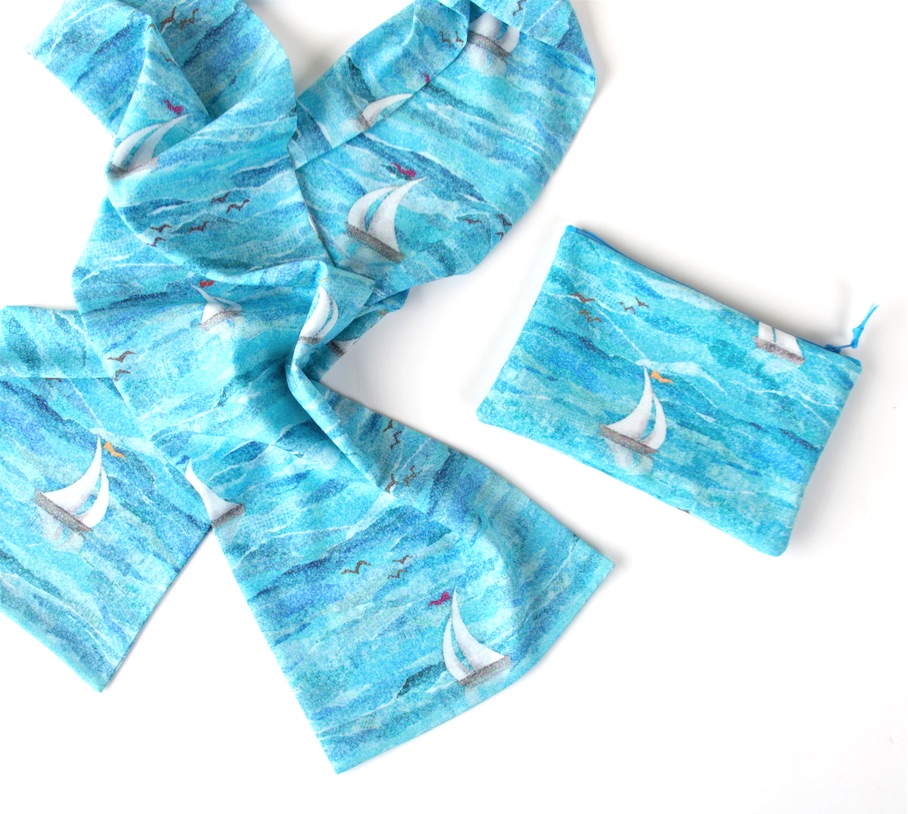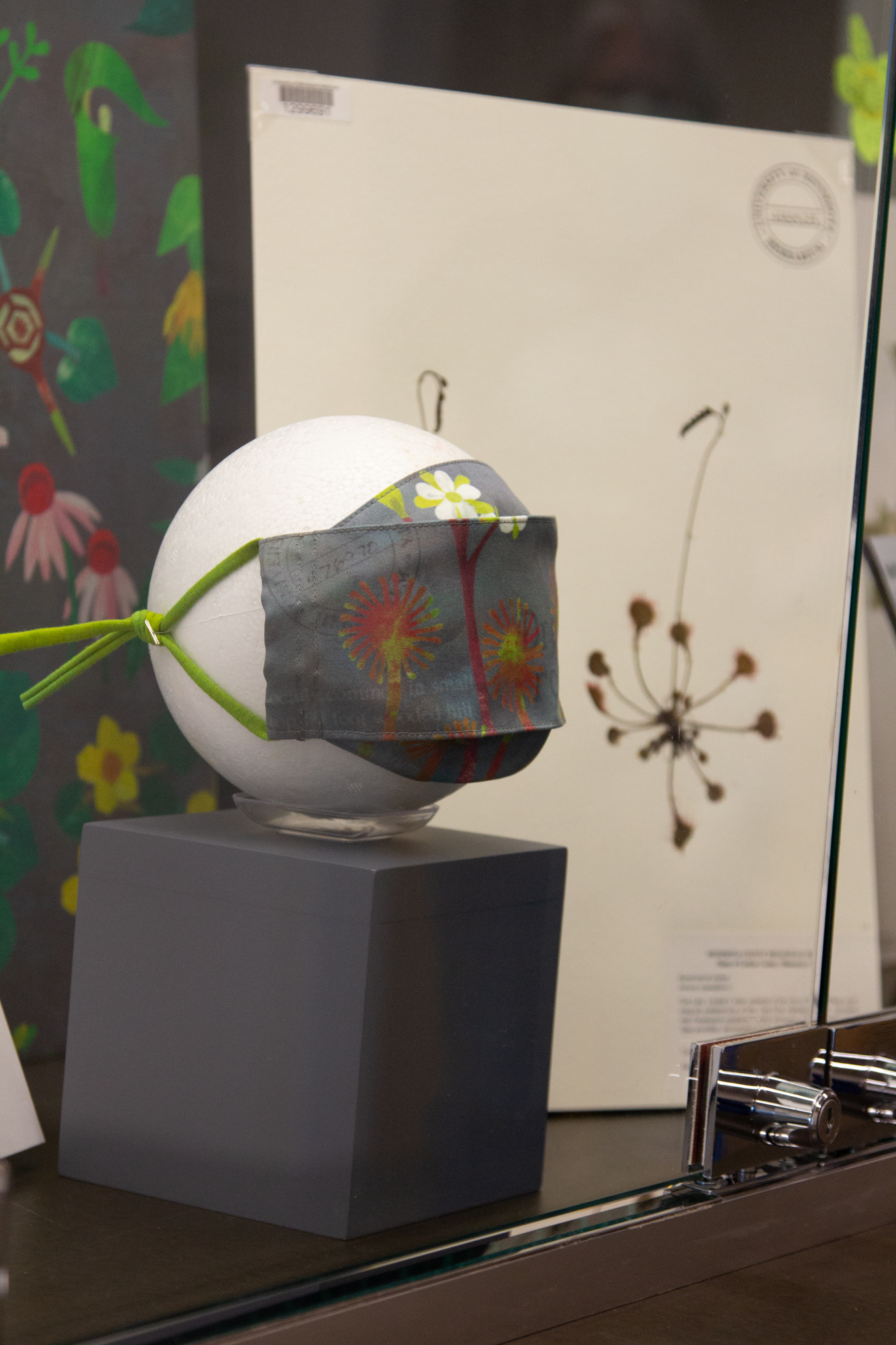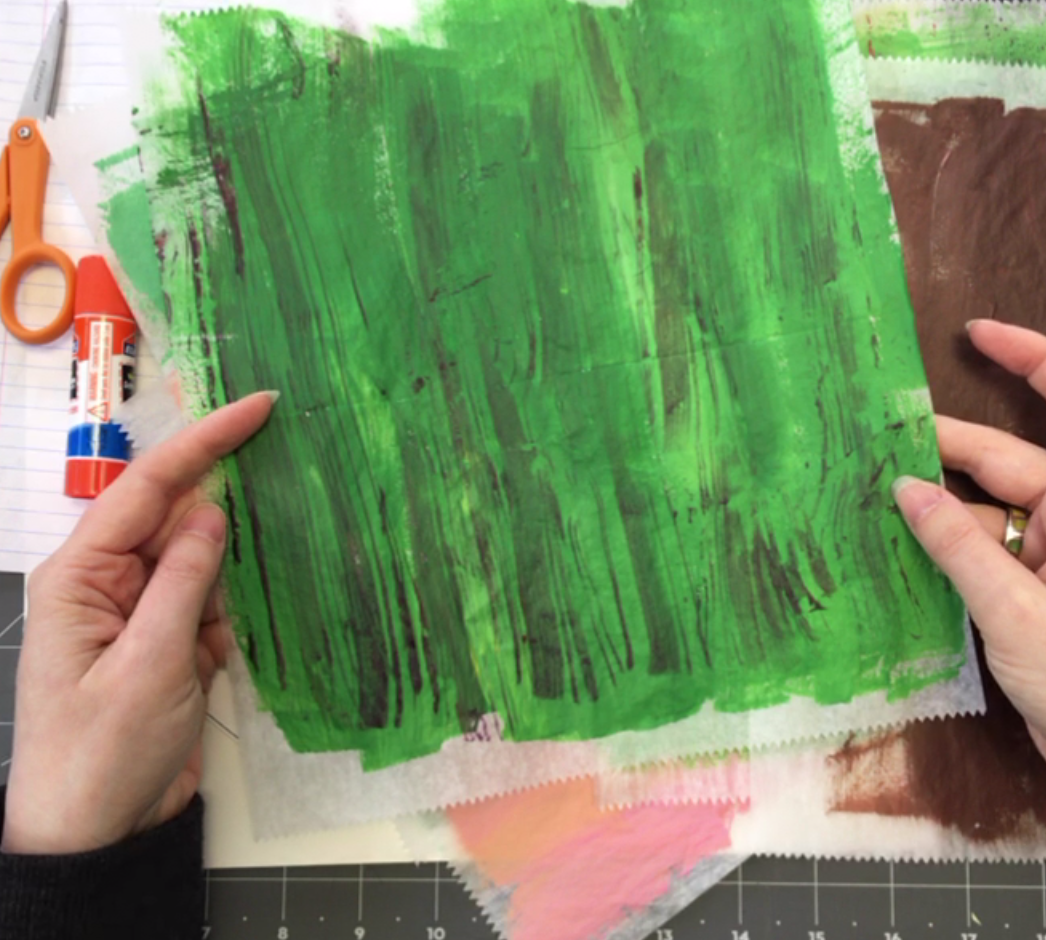Last week I had a really great time doing an Artist Talk webinar for Spoonflower about my process, my long friendship with Spoonflower, and about my art. There’s a link to the replay below. There were a collection of questions in the chat that we didn’t get to (and some on my social channels), so I thought it would be fun to write a follow up post and answer some of those.
Q: What type of scanner (and other tools) do you use?
Scanner: My scanner is super simple. It’s an all-in-one printer/scanner made by Brother and it’s probably 15 years old. You really don’t need a high tech or fancy scanner, you just need a few settings and clean glass. I very often create designs that are larger than I ultimately want the finished fabric scale to be because it’s hard to make tiny fine details in cut paper. So I most often scan things at 150 or 300 DPI knowing that I will be printing them at 150 DPI (Spoonflower’s resolution).
Sewing Machine: I do all of my sewing for everything: exhibition pieces, things for sale in my Etsy shop, samples. I have a Pfaff Expression 3.2 that is an awesome machine.
Software & Apps: I do most of my editing in Photoshop and Illustrator. Because I know them and they work for me and that’s the most important part. There’s no one right tool to make art. I teach using Pixlr, because it is a free app and that makes it the most accessible for my students. I don’t use tablets or Procreate because I just don’t like drawing/painting my designs. That’s just not the way that I work, so those are not the right tools.
Q: I think it’s so clever how you’ve designed into your Shop Header to “be sure to click NEW to see my latest designs.” A “steal-worthy” tip for sure!
You are right: it is a steal worthy tip and I know because I stole it! Credit for that idea goes to my friend Anda Corrie, who was the author of Spoonflower’s “Quick Sew Project” book. She shared it on her social media somewhere and I totally copied her.
Q: Do you teach on Skillshare too?
No I don’t, for a couple of reasons. I know Skillshare is super popular, but I don’t like their teaching format (which is only video like a TV show) and the way that teachers are compensated. I also don’t like the idea that my classes would be only accessible via a monthly membership fee paid to another company. I feel like it just makes them inaccessible for too many people.
I DO offer online classes that I host through Teachable! I am in the middle of moving classes over to Teachable from another platform, so it’s a little bit in transition right now but they should all be migrated in the next couple of weeks and I can start adding more.
Q: What recommendations do you offer for expanding your marketing reach beyond social media?
Don’t we all wish we had an answer to this question? I talked a little about this in my webinar, but get your work in places that people will see it. Make things you can exhibit, get it into shops on consignment or wholesale, wear it, use it, talk about it. If you don’t sew or make things, partner up with someone who does. See if you can come up with a partnership that is a win for both of you. Enter the Spoonflower weekly contest.
No one likes to be sold to. Think about all of the jokes about used car salesmen. So don’t focus on “selling” your work but on telling the stories. Talk about what you do and why. Share the inspiration for the design or the colors. People love to see behind-the-scenes and sneak peeks. I can spend half an afternoon watching “making of” videos from artists on Instagram but I can’t think the last time I clicked through to see someone’s post about a “new collection for sale”.
Q: I want to take a class from you, starting with the mosaic, to the finished fabric!
Noted! Mosaics are SLOW so I think it would make a really boring in-person class but I have thought about translating it into an online class so you can do some of the time consuming part offline. That mosaic toad design I showed you in the webinar probably took me 5-6 hours to create from start to finish. I have a design of mosaic waterlilies that I think took more than 40 hours.
Q: Is there a blog post on Spoonflower that explains how to do this? Is this possible still on Spoonflower, such a ‘placed’ print? [This refers to printing a design as a placed/engineered print for clothing rather than a repeating design.]
Not on Spoonflower’s blog, but there are several projects like this in the Spoonflower Handbook. In the simplest terms, the way to design like this is to not think about making a repeat but to think about designing a whole yard (or more) of fabric all at once. I do this alot. Instead of setting up a canvas that is 8 inches square or something like that, I set up a canvas that is 42×36 inches, or that will fill a whole yard of fabric. Then I design what I want that yard to look like. It’s not any harder than making a repeat (in fact I think it’s easier) but it’s just a different way of thinking about it. If you want to design to place something on a dress, for example, you have to do a little math to know what pieces you need to cut out (bodice, sleeves, skirt) and to design blocks that are the size you need to cut out those pieces.




